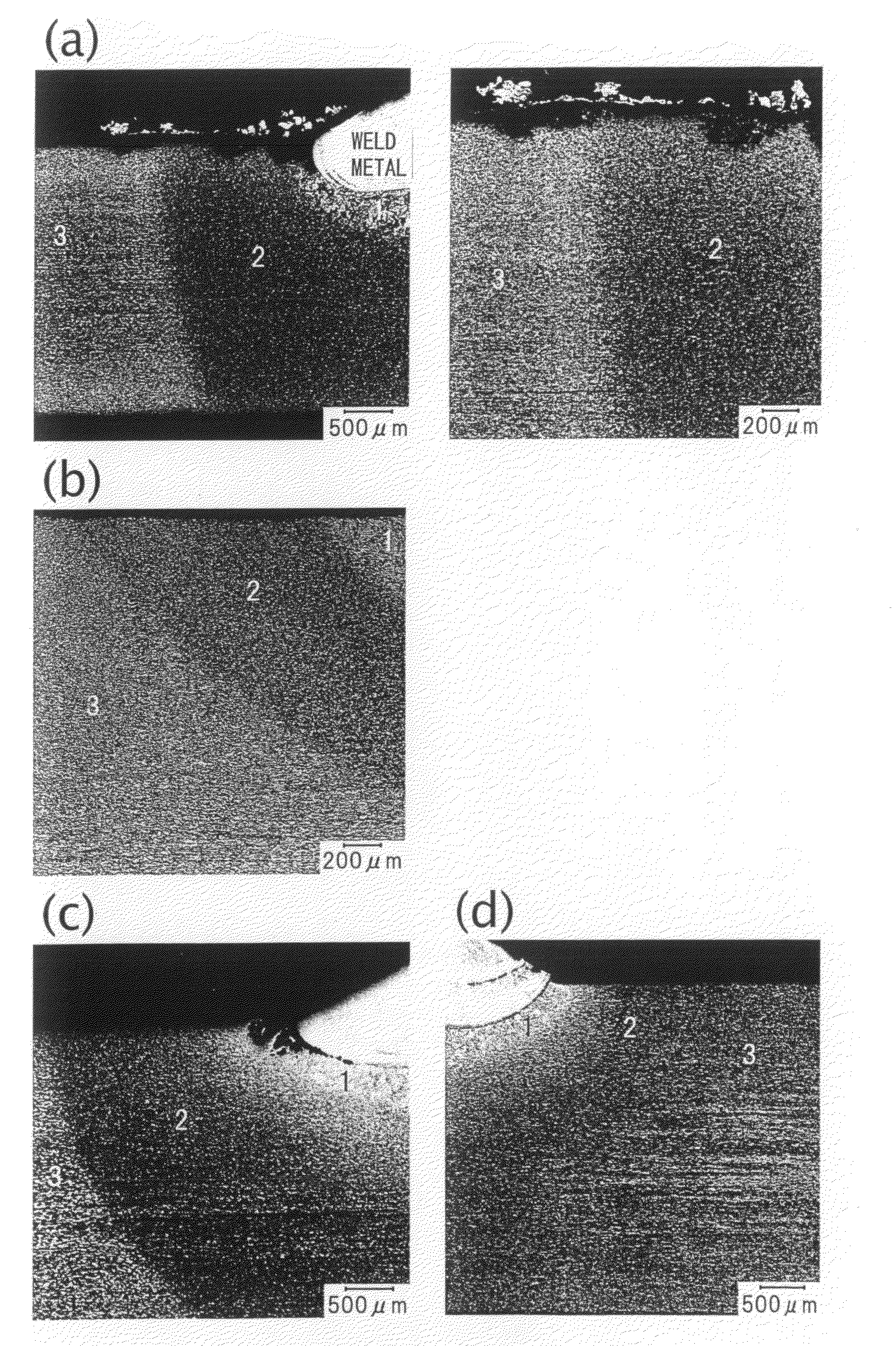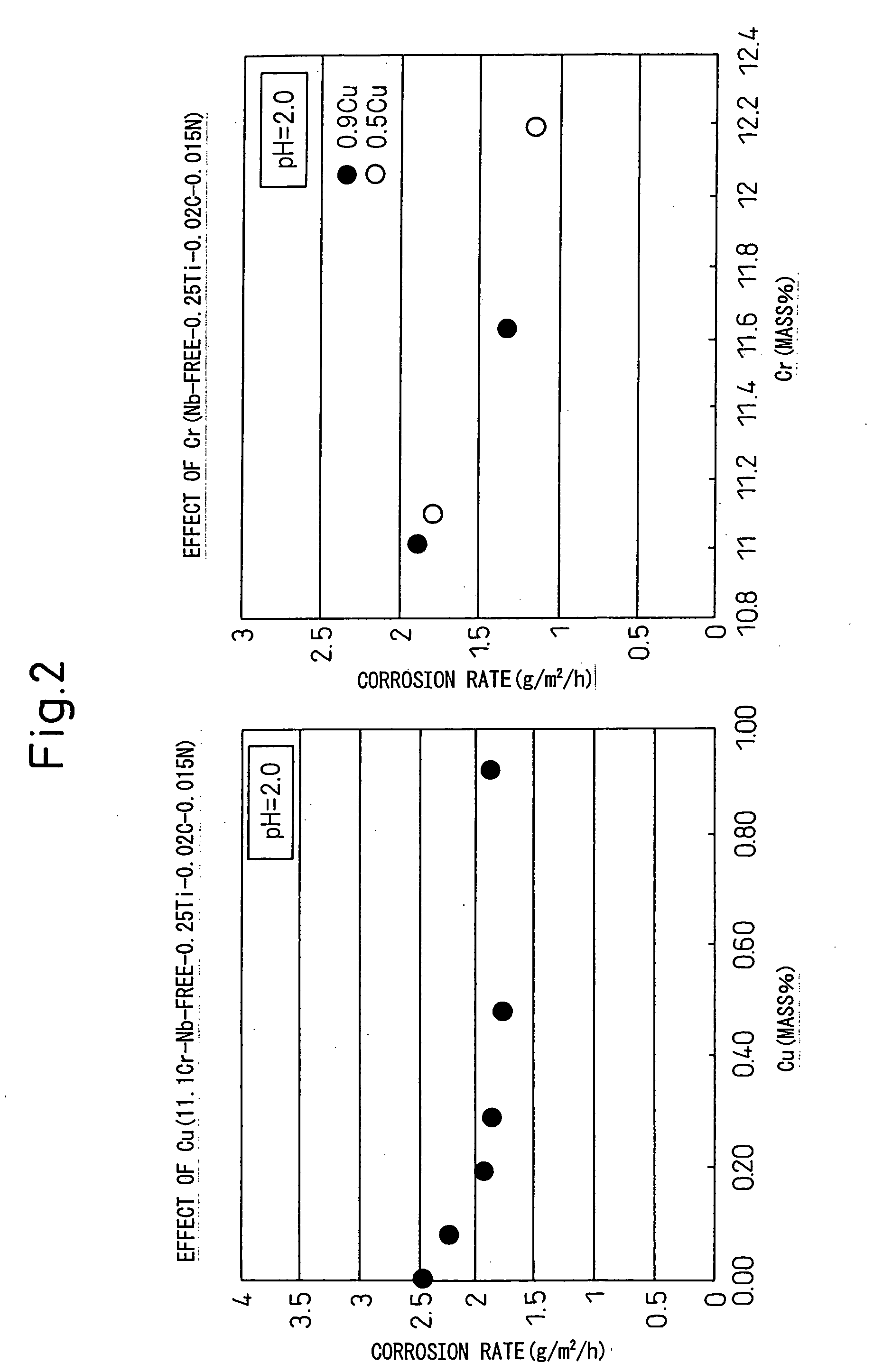Low Chromium Stainless Steel Superior in Corrosion Resistance of Multipass Welded Heat Affected Zones and Its Method of Production
- Summary
- Abstract
- Description
- Claims
- Application Information
AI Technical Summary
Benefits of technology
Problems solved by technology
Method used
Image
Examples
example 1
[0071]Table 1 and Table 2 show invention steels and comparative steels relating to the first pending issue.
[0072]Table 1 shows the steel ingredients of the invention steels and comparative steels by mass %. Steel Material Nos. 1 to 20 are invention steels, while Steel Material Nos. 21 to 26 are comparative steels.
[0073]The vacuum melting method was used to melt cast slabs of the ingredients shown in Table 1 into 40 kg or 35 kg flat ingots. These steels were touched up on their surfaces, then the ingots were heated at 1150° C. to 1250° C. for 1 hour and processed by hot roughing comprised of multiple passes and the following finishing rolling. The end temperature of the hot rolling was 800° C. to 950° C. The hot rolled plates were air cooled, then soaked at a coiling temperature of 700° C. for 1 hour, then air cooled and coiled up for simulated heat treatment so as to obtain hot rolled plates of plate thicknesses of 4 mm. Next, to determine the annealing temperatures of the hot rolle...
example 2
[0093]Table 3 and Table 4 show invention examples and comparative examples relating to the second pending issue.
[0094]Table 3 shows the steel ingredients of the invention steels (Steel Material Nos. 27 to 35) by mass %. The vacuum melting method was used to melt cast slabs of the ingredients shown in Table 3 into 40 kg or 35 kg flat ingots. These steels were touched up on their surfaces, then the ingots were heated at 1150° C. for 1 hour and processed by hot roughing comprised of multiple passes and the following final hot rolling. The end temperature of the hot rolling was 800° C. to 900° C. The hot rolled plates were air cooled, then soaked at a coiling temperature of 500° C. for 1 hour, then air-cooled and coiled up for a simulated heat treatment to obtain hot rolled plate of a plate thickness of 4 mm. Next, to determine the annealing temperature of the hot rolled plate, various ingredients of hot rolled plates were soaked at 575° C. to 850° C. for 5 to 50 hours, then, simulating...
PUM
| Property | Measurement | Unit |
|---|---|---|
| Fraction | aaaaa | aaaaa |
| Fraction | aaaaa | aaaaa |
| Fraction | aaaaa | aaaaa |
Abstract
Description
Claims
Application Information
 Login to View More
Login to View More - R&D
- Intellectual Property
- Life Sciences
- Materials
- Tech Scout
- Unparalleled Data Quality
- Higher Quality Content
- 60% Fewer Hallucinations
Browse by: Latest US Patents, China's latest patents, Technical Efficacy Thesaurus, Application Domain, Technology Topic, Popular Technical Reports.
© 2025 PatSnap. All rights reserved.Legal|Privacy policy|Modern Slavery Act Transparency Statement|Sitemap|About US| Contact US: help@patsnap.com



